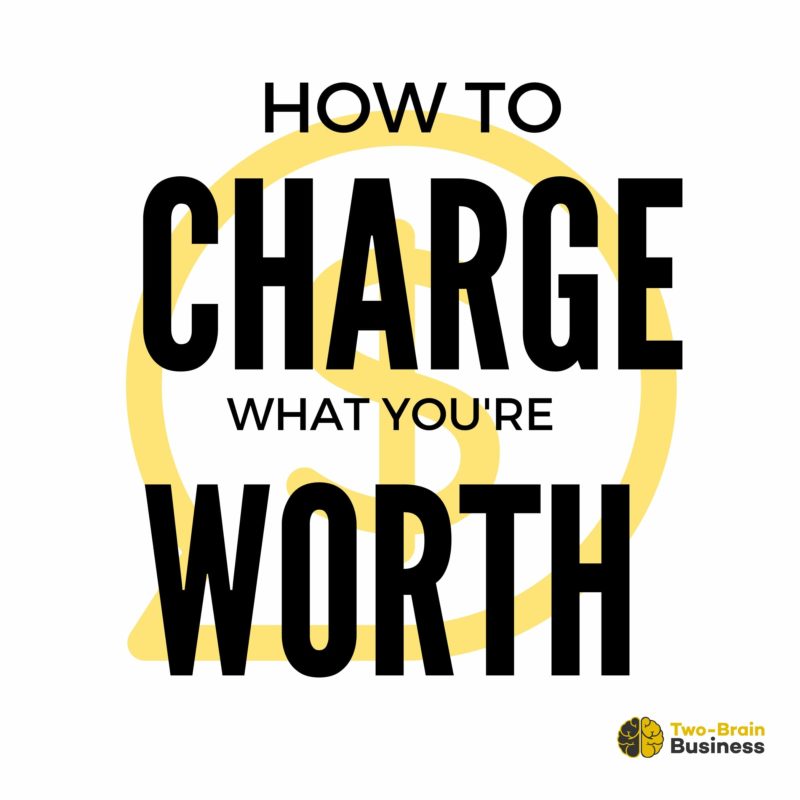Gym owners are stuck.
They need more money to live a healthy lifestyle, run a sustainable gym and keep their members healthy for the next 30 years.
On the other hand, they’re worried about what clients will pay for their service. This is usually unfounded. But if a coach underprices her value, she won’t be teaching the air squat for long.
Below, I’ll tell you how to charge what you’re worth.
1. Be worth it.
This sounds a bit backhanded, but the top reason many coaches can’t charge more is because they’re not worth more.
Your value to a client doesn’t come from what you know; it comes from how you make him or her feel.
Give every client 1:1 attention at every class. You’re coaching a room full of individuals, not one entity with multiple parts.
Review their goals in person several times per year. If you don’t know where they’re going, you can’t lead them anywhere.
Look like a professional. Dress better than your clients are dressed. Wear a “staff” shirt. Don’t sip coffee while coaching. Run to fetch equipment. Smile, whether you feel like it or not.
Give them your undivided attention. Stay off your phone. Don’t carry on a conversation with others while coaching a 1:1 client. Don’t coach “the room” but each person within the room.
Establish your expertise—but don’t barf all over them. Give them a taste of future knowledge in every session. Use one or two technical terms every class—no more, but no less. Teach them to know more than any other coach in town and they won’t have a reason to leave.
2. Don’t give discounts or have sales.
Price fluctuations erode trust and encourage price shopping. Consistency is more important than anything else.
Your current clients are more important than any future clients.
Everyone deserves the same excellent service; each person should pay the same rate for it.
3. Base your rate off your service, not your competition.
After over 1,000 one-on-one gym evaluations, I can promise you this: The other owner probably had no idea how to price his or her memberships.
Why place your business on the same shaky foundation by copying? Or, worse, by pricing yourself cheaper? The Two-Brain family is full of stories of gyms that are the most expensive in their area.
Read: “Twofer Night at the Discount Steakhouse” in the CrossFit Journal.
4. Know who your clients are.
You are probably not your best client.
Your best clients come from the top 10 percent of professionals in your area. They make more than you do but have different constraints (schedule, family, stress).
Your best clients have different goals (fat loss, stress reduction, “turn off my brain”) than you do.
The “average” household income in your area is irrelevant.
To determine who your best clients are and what they want, use the “Pumpkin Plan” formula outlined on Two-Brain Radio.
5. Stop projecting your own budget onto your clients.
They make more than you do (for now).
They will pay more than you would (for now).
6. Know what establishes value and what erodes value.
Price anchors establish value.
Classes starting on time establishes value.
Professional coaches establish value.
Clear, attractive branding establishes value.
A good website establishes value.
Shiny equipment and floors establish value.
Dirty bathrooms erode value. But they don’t create value: They’re just essential. No one looks for the gym with the cleanest bathrooms, but they’ll quit the gym with the dirty bathrooms.
The same goes for not answering the phone or returning emails. These aren’t bonuses; they’re foundations.
7. Set a limit.
The law of supply and demand applies to your business.
You have limited supplies of attention, time and space.
Know your limit. Don’t chase infinity.
Build your prices, staff needs and purchases with that limit in mind.
Recruit and reject clients and staff with that limit in mind, too.
8. Live up to it every second.
Clients’ experiences are only as good as the last exposure.
You’re not married. You probably won’t enforce the contract they signed (if you’re still using contracts). They’re not trapped.
What you know doesn’t matter. How you make them feel does.
Fifteen minutes before an appointment or class, you’re on stage.
Put down the shaker bottle. Put your “coach” shirt on. Smile.
Need More Help?
Our certified mentors help you mathematically determine your optimal rate in our Incubator. This process is based on data, not guesses. We’ll help you figure out exactly what you need to charge and how many clients you need to live the life you want.
Most of the time, it’s a higher number than the owner has been charging. When this is the case, gyms are often in rough shape or their owners are working 12-hour days and missing time with their families.
But it doesn’t have to be that way. We can show you what to charge, how to charge it and how to fix your prices if you’ve made a mistake.





